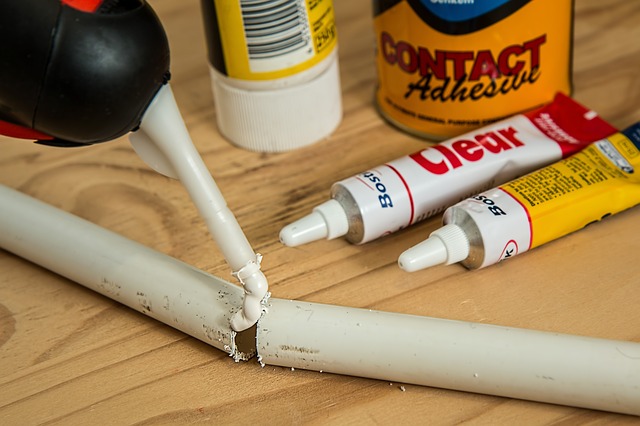Top survival uses for glue

A simple container of glue may not seem like a useful survival item, and while you may believe it belongs in an arts and crafts container over a survival kit, the truth is simple, glue is not a survival item that you want to overlook. You’re about to find out why.
Here are the top ten survival uses for glue:
Treating wounds

The best survival use for glue is how it can be used to help treat wounds. First and foremost, do not bring glue into contact with your mouth or eyes. However, it can be used to help close up any open wounds virtually anywhere on your body.
It should be noted that using glue to close up open wounds should be utilized only as a last resort. If you have proper medical gear such as sutures, butterfly strips, or gauze pads, then use those first. But if you don’t have any of those kinds of items, then the glue will be your next best option.

After cleaning out the wound with water, dry the area and pinch the wound shut with your fingers. Do not pour glue directly into the wound. After closing off the wound as best you can, apply some glue over it, to seal it. Stay still and allow the glue to dry for the wound to stay shut, make sure you don’t glue your fingers to your patient. Limit mobility and get plenty of rest and water.
Alternative to duct tape

Duct tape is one of the most multipurpose items on the entire planet. But if you don’t have any with you in a survival situation, you can easily use glue as a backup option (super glue is even better). Another great idea is to combine duct tape and super glue together.
Repair your water bottle or canteen

If your water bottle or canteen is the only object you have available to hold water, then you need to take extra good care of it. If any cracks or holes open up in your bottle or canteen at all, use glue to seal it off. The glue will actually melt into the plastic to make it shut. Allow it to dry for a few hours before pouring more water into the bottle or canteen.
Repair your boots

Your hiking boots also need to be given extra care and attention in a survival situation. If you allow any holes to open up, your boots could become ruined and result in blisters developing on your feet. Yet again, you can use glue to seal up the hole. Just allow it to dry for a few hours.
Repair a tent or backpack

Something else you can repair with glue or super glue will be a tent or backpack. Both of these need to be free of holes as well. You have two options for what you can do here: you can use just the super glue to seal up the smaller holes, or if the hole is too big, cut a strip of cloth and glue it over the hole.
Glue feathers to arrows

If you ever build your own makeshift bow and arrows, you’ll need some kind of adhesive material to stick the feathers to the end of the arrow. Glue and super glue will work perfectly for this.
Repair your fishing tackle equipment

Virtually any kind of fishing equipment can be repaired with the aid of glue or super glue. You can also use it to help secure lures or bait to your fishing line.
Make an adhesive filler

As long as you have baking soda and super glue with you, you can craft together a very strong adhesive filler. Baking soda is already a popular survival item because of its versatile cleaning and personal hygiene uses.
Simply sprinkle a little baking soda over the hole or area that you would like to fill. Then pour in a little super glue to mix in with the baking soda. In just a matter of minutes, it will turn into a hard adhesive filler that’s stronger than just glue on its own.
Remove a splinter

Splinters can be incredibly annoying not to mention painful, and it’s no secret that they can be very tricky to get out. Fortunately, this is nothing that simple glue can’t handle. Just pour a little glue over the site of the splinter and allow it to dry. Then when you peel off the glue, it will pull out the splinter with it.
Protect your shoelaces

One of the best methods to prevent your shoelaces from fraying is to use super glue. Simply pour a little glue onto the end of the shoelaces and allow it to harden, and you’re set.

If you have any comments then please drop us a message on our Outdoor Revival Facebook page
If you have a good story to tell or blog let us know about it on our FB page, we’re also happy for article or review submissions, we’d love to hear from you.
We live in a beautiful world, get out there and enjoy it.
Outdoor Revival – Reconnecting us all with the Outdoor
